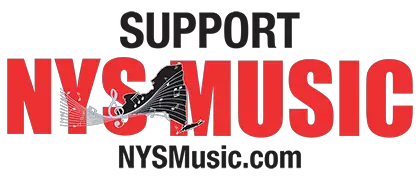The Brooklyn Chamber Orchestra, conducted by Philip Nuzzo, performed a night of 20th Century British classical music at the enchanting St Ann and the Holy Trinity Church in Brooklyn Heights, February 7.
Lasting nearly two hours, the performance featured Malcolm Arnold’s Concerto for Piano Duet & String Orchestra alongside the main event, The Planets by Gustav Holst.

Arnold’s Concerto begins with the Allegro, the cinematic opening credits to this unconventional piece, in which hopeful strings set the scene. We are met with staccato messages, the whole orchestra syncopated under the spell of Maestro Nuzzo.
We are into the second movement, the Larghetto, where whiny strings morph into an ascending piano grumble, then we are back to carefree frivolity. The orchestra seems to fall back into its sullen mood; recalcitrant strings float up into the eaves.
The third movement, Vivace, is rhythmically driven and liberated, involving the kind of patterns that might get the more electronically, techno-minded youth into classical music. At some point the violins are played in a way I’ve never seen before—by tapping the bows onto the strings—to produce a sound like, well, I’ve never heard anything quite like it.
Now we are into Holst’s Planets, our main event. The lights are dimmed and animations of each planet are projected onto a screen behind the orchestra. The room is totally dark now, so if my handwriting seems a little shaky, you’ll understand.
We start with Mars, and what a way to open. Holst’s aim was to represent the character of the planets in the solar system, in this case the venerated Bringer of War. If someone can name a musical brief more emphatically nailed than Holst’s military soundscape then I want to hear it.
We are tumbling through some torrent, pummeled down by the orchestra, when all of a sudden it is beautiful again. If listeners recognize elements of John Williams’ score to Star Wars, then they would be forgiven: director George Lucas reportedly instructed Williams to use this piece as inspiration for that great cosmic battle-scape. Again we are treated to unconventional rhythms and dissonant chords which makes it all feel so modern compared to previous classical periods.
Next is Venus, the Bringer of Peace, and tonight, in this setting, with these gorgeous strings, it is Venus who wins our hearts and minds. If Venus is about beauty, then it is also about loss; lamenting those vanquished by Mars’ staccato batteries.
We are into Mercury, the Winged Messenger, the shortest of the pieces and the last to be written. Here we can hear the musicians at their most inquisitive, but they grow into this one, breaking our hearts in the crescendo-diminuendo midsection.
Holst was apparently inspired to write The Planets after learning about astrology while on vacation in Spain, later becoming a “a remarkably skilled interpreter of horoscopes.” His work should find sympathetic ears in Brooklyn.
(Holst was a Virgo, who are of course known for their modesty. This probably explains why Holst came to resent the success that The Planets found.)
Next comes Jupiter, the Bringer of Jollity. For those watching the swirling of toxic gases and thunderstorms the size of continents projected behind the orchestra, ‘jollity’ may not be the first emotion that springs to mind.
Indeed, Jupiter may be the most destabilizing of the pieces, an emotional rollercoaster. It is the middle section of this piece, adapted for the hymn I Vow to Thee My Country, which had NYS Music’s British envoy for the evening clutching the pews beneath him to avoid any kind of patriotic outburst.
We are through Uranus—ahem—the Magician, and Neptune, the Mystic, during which the Grace Chorale of Brooklyn make a spectral entrance in the cloisters, like some ghost of St Ann. Chilling stuff. The crowd filters out into the cold night, and we hope next time they turn their eyes skyward, the shiver down their spine might last just a little longer.


Comments are closed.